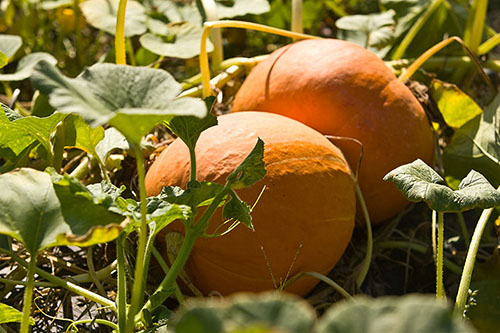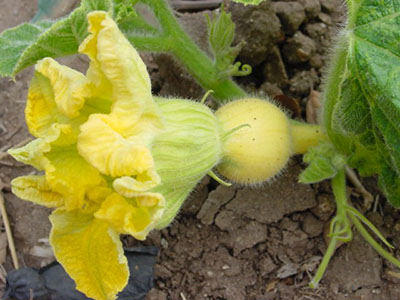Pumpkins
The name “pumpkin” is commonly applied to any plant in the taxonomically diverse Cucurbita genus that produces the characteristic yellow to orange, round fruit. Pumpkin cultivars may belong to one of several species: Cucurbita pepo, C. maxima, C. moschata, and C. mixta.
Marketing

Most pumpkins are used for ornamental purposes, with the greatest market demand from mid-September through Thanksgiving. Marketing options include roadside stands, local retailers, wholesale markets, grower marketing associations, community supported agriculture (CSA) and U-Pick. Illinois is the largest pumpkin producing state, and there is significant wholesale acreage in states bordering Kentucky: Indiana, Ohio and Tennessee. Agritourism events, including school farm tours, often feature pumpkins. Smaller-sized and unique pumpkin varieties, including those with good eating characteristics, may appeal to many direct market customers. Higher and more stable prices can be expected from direct sale or even “pumpkin festival” sales, but this market can become saturated with too many growers. This is more likely to be the case in urban areas. Sales by smaller pumpkin growers to growers holding larger festivals may bring prices that are higher than wholesale prices. Smaller growers could also consider joint marketing efforts to attract wholesale buyers.
Production
 Pumpkin fruit can vary in size from less than a pound to more than 1,000 pounds. Along with the traditional orange-yellow color, there are cultivars that produce red, white, bluish-grey or striped fruit. Varieties are also bred for specific purposes, such as carving, decorative uses, processing or baking. For example, cultivars that are suitable for carving jack-o-lanterns are normally too stringy or lack the flavor necessary for pies. While hard shell pumpkins are uncarvable, they have a very long shelf life and are easy to paint. Consideration should be given to the qualities in demand by the intended market. In addition, commercial growers should select well-adapted cultivars that have the necessary disease and pest resistance for their locale.
Pumpkin fruit can vary in size from less than a pound to more than 1,000 pounds. Along with the traditional orange-yellow color, there are cultivars that produce red, white, bluish-grey or striped fruit. Varieties are also bred for specific purposes, such as carving, decorative uses, processing or baking. For example, cultivars that are suitable for carving jack-o-lanterns are normally too stringy or lack the flavor necessary for pies. While hard shell pumpkins are uncarvable, they have a very long shelf life and are easy to paint. Consideration should be given to the qualities in demand by the intended market. In addition, commercial growers should select well-adapted cultivars that have the necessary disease and pest resistance for their locale.

